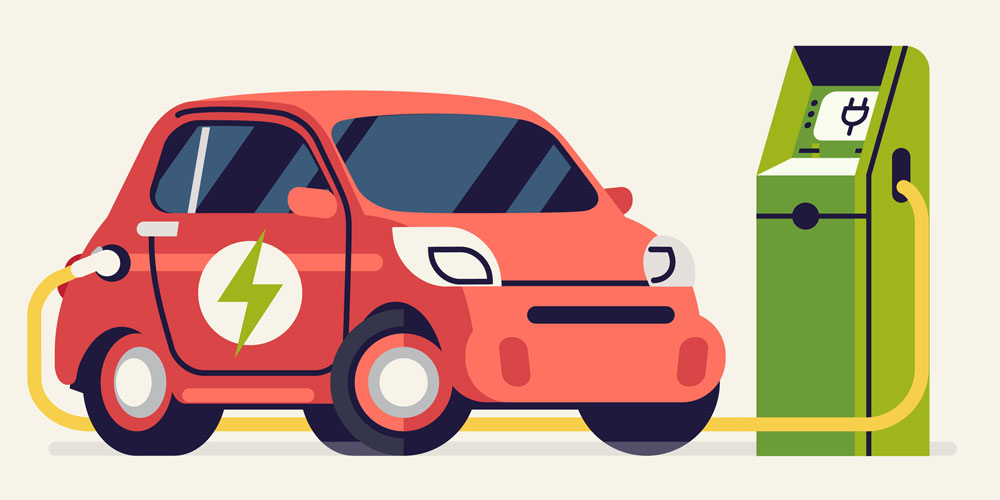Powered by batteries and electric motors, electric vehicles (EVs) are getting more popular; reaching 2.5 million vehicles globally in 2020 and expected to grow at a rate of 70% in 2021. This growth, has also increased awareness for Electric Vehicle Supply Equipment (EVSE) also known as charger to re-fuel or recharge electric vehicles.
Let's explore basic classifications of chargers that can be used to fuel electric vehicles and where these types of chargers are recommended.
Before we jump in to details, it should be noted that in North America, the average commuting daily distance is around 32 miles or 50 km, and that most of the time cars do not have a full tank. Additionally, most EV manufacturers do not recommend to charge the battery at full capacity on a regular basis to extend the life of the battery. A key point to help reduce public range anxiety when discussing the adoption of this new technology.
The term EVSE (Electric Vehicle System Equipment) refers to cables, connectors, control circuitry and other communication devices in a single assembly that operate to safely transfer power. They also enable the exchange of information between the electric charging circuitry and the electric vehicle.
1. Level 1 Charging
A level 1 EVSE or charger, is the smallest charger available, it can be plugged to a standard home electrical outlet rated 120 volt (V) alternating current (AC) and 15 to 24 amperes or equivalent capacities of 1.4 to 2.8 KW.
While it is the slowest charging type, it is ideal for someone who uses a car sporadically or makes short commutes on a daily basis, because a Level I EVSE adds about 5 miles -8 km of range per hour, taking between 8 to 30 hours to fully recharge an EV battery.
2. Level 2 Charging
This type of charger requires the use of a 208 to 240V AC plug, with ratings between 30 and 40 Amperes, or power ratings between 6 and 7.2 KW. Of course, Tesla is the exception with a new Level II charger for homes that can be pre set to draw up to 48 Amperes and requiring a 60 Ampere circuit breaker.
Depending on the battery size, it can take between 4 to 10 hours to fully recharge an EV Battery, adding approximately 30 miles or 50 km of range per hour. A level 2 EVSE is recommended for those with longer commutes or those who use a vehicle for multiple errands or sales calls and have the opportunity to charge overnight at home, during the day at the workplace, and at public locations.
The most common charger type come in multiple options from dumb or just plain chargers to smart and networked chargers for demand control, and multi-vehicle charging control. The Networked charging stations can be connected to other stations via a hardwired connection or via a wireless WiFI or cellular signal. These stations allow for more advanced controls and offer various functions, in addition to EV charging. They include online reservation systems, mobile app integration, remote monitoring and updating charging level.
3. Level 3 Charging
Also known as Direct Current Fast Charging (DCFC) is the quickest way to charge a battery; this type of charging is supplied through a 480V direct current (DC) source rated over 50 Amperes and up to 300 Amperes (Tesla Supercharger) and most commonly uses a CHAdeMO plug (again except for Tesla). DCFC stations charge BEVs (Battery Operated Vehicles) to 80% in just 25 to 30 minutes, adding more than 100 km of range per hour. They are best suited to highways and driving applications where recharging is necessary in a very short period, for example a coffee or a lunch stop during a long road trip.
4. Wireless Charging
This technology is currently used in homes, with electric toothbrushes, and cellular phone charging, it is still in development stages. Ontario Tech under the leadership of Prof. Sheldon Williamson is advancing the research on the ideal coil design for the most efficient inductive charge transfer. This type of charging is ideal for city buses or school buses that make frequent stops on a fixed route, for vehicles that use inductive charging, which is electricity transferred via an air gap between two magnetic coils, to allow vehicles to charge without plugging in, during their stops.


